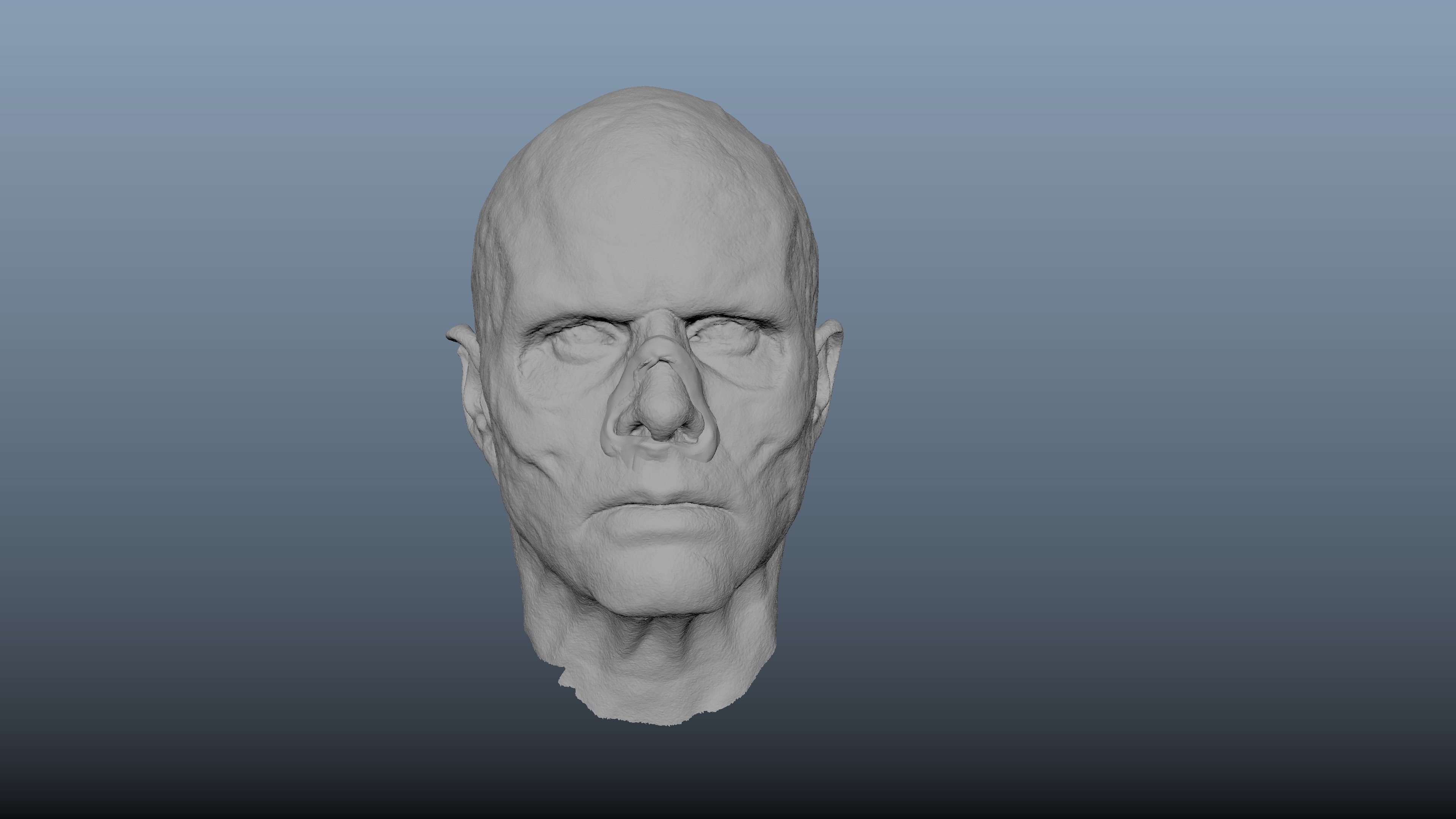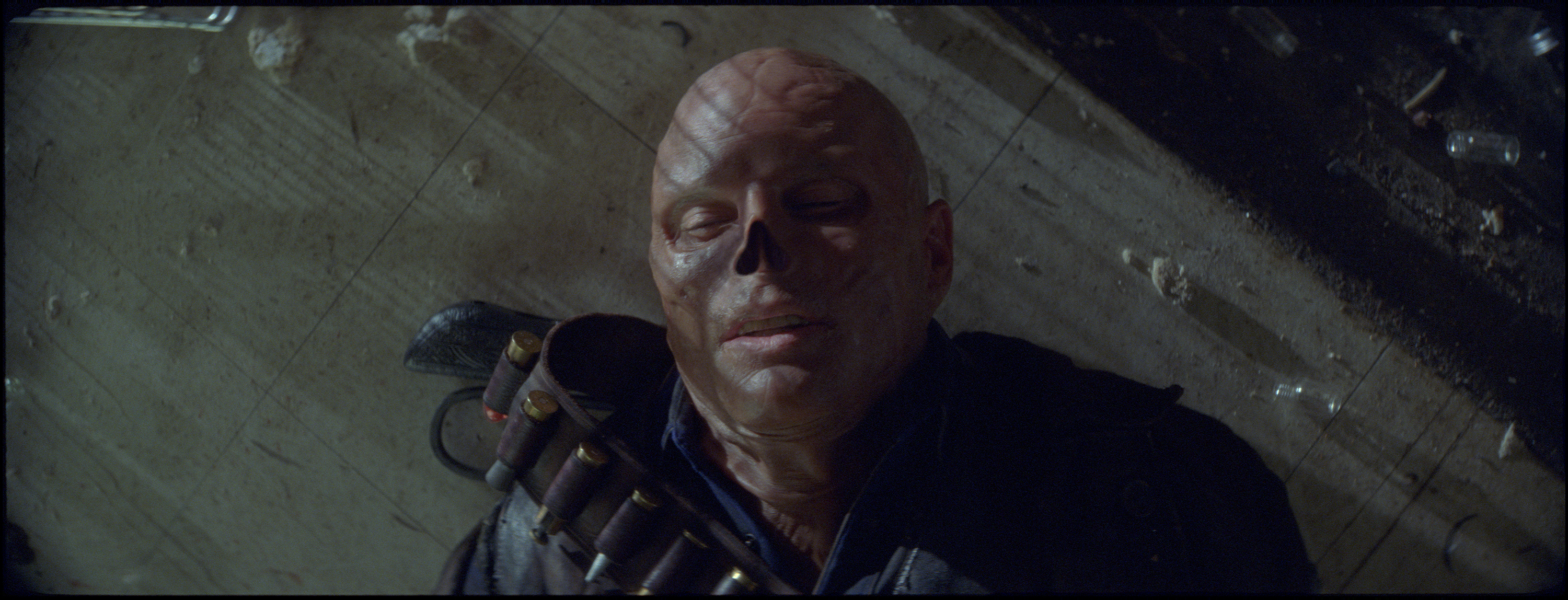
Fallout, based on the hit video game series, has become Amazon Prime's second most-watched show. It's scooped up 16 Emmy nominations, including Outstanding VFX, and it's proved so popular that it was renewed for a second season just a week after its launch.
With many memorable CGI and VFX elements in the series, anyone who's watched it has probably found themselves asking at some point, “How did they make that?” One of those moments is The Ghoul’s nose. This was created by FutureWorks, a long time collaborator of VFX Supervisor Jay Worth, who also worked on Westworld and The Peripheral. We caught up with them to learn how they crafted that nose (or lack thereof).
The creative process behind The Ghoul’s nose


Walton Goggins’ character Cooper Howard is introduced at the beginning of the first episode of Fallout as the nuclear apocalypse unfolds. Two hundred years on, Cooper is still alive due to the effects of radiation, but with this came a mutilated appearance. This is where he is introduced to viewers as ‘The Ghoul’ – a heartless soul on the hunt for blood and money because of a bounty. To bring the character to life, the visual effects team needed to create a face that was extremely mutilated yet incredibly ‘realistic.’
The immense detailed scope for The Ghoul’s nose was set out from the start, becoming the team’s greatest success and challenge. The authenticity of the character was a massive driver, as the director and production team wanted to ensure the series perfectly resembled the video game and did it justice. With that in mind, the team created a process to successfully deliver the absence of the nose and cartilage.

Through the use of matte paintings, visualizations, and references from the game, the team was able to understand how the final composite would look and how they would work to achieve it. They needed to replace the matte painting to add the VFX elements that would make the section of the character’s nose hyper-realistic, resulting in many tests to perfect it.
Head scans and prosthetics were used to make the VFX process easier. This allowed a negative space to be created in which the team could work their magic on the details of the nose. Tools and software such as Maya, Nuke, Photoshop, Substance Painter, and Z-brush were used for the details of The Ghoul’s nose. These tools, complemented by the creative minds and expertise of the FutureWorks’ VFX team, resulted in the chilling character on the screen.

Building a Post-Apocalyptic World
Turning sunny Los Angeles into a sandy wasteland was a challenge. Keeping all elements of the game in mind, the series and the individual episodes had to bring the environment to life. Given there are many territories and climates explored, the atmosphere of the game and the characters met along the journey is a big part of the storyline – depicting this in live-action was critical to the producers.
Daily design news, reviews, how-tos and more, as picked by the editors.
Gouri Shankar, the VFX supervisor at FutureWorks, worked with his team to build set extensions that helped bring the series to life – delivering five important shots. “There were up to 12-15 shots per scene which were taken from a camera array that needed stitching,” Gouri says. “We also worked on set extensions for scenes including Lord Titus and Maximus in the helicopter, preparing to drop into the wasteland.”
It was imperative that the scenes looked aged and that the environments matched what players saw within the Fallout video game – feeling as if the game had come to life. The use of multiple cameras, editing, and LED walls was essential to creating this effect. To ensure the wall had the right color pipeline, the team worked closely with the virtual production studio Magnopus and the DoP for multiple tests – ensuring there were several experienced and creative eyes on the process.
The tools and methods that brought the show to life
The main tools used in the VFX and set extension process were Maya, Keen Tools plugins, Nuke, Z-Brush, Substance Painter, and Photoshop. These tools each played their part in the success of the set extensions and building the pre and post-apocalyptic environments, as well as the beloved mastery of The Ghoul’s nose. Many iterations and artists oversaw the work to make sure it embodied the authenticity of the game in a live-action setting.
The grading process was integral to ensuring the finished product was exactly as the brief outlined. While the assets were provided to the FutureWorks team by producers, they were given no direction, meaning they had creative freedom in how they created and met their targets. The grading was a part of the process that the team completed before the VFX process and only added the VFX elements to it after each file and shot had all the assets required.
The challenges
The work for Fallout began in January 2023 and didn’t finish until December, and there were challenges along the way. As seamless and perfect as it looked, the work for The Ghoul’s nose was a long process.
Making sure that the absence of a nose on a character didn’t take away from expression or dialogue was a big challenge. As Walton’s character was a core one that played a pivotal role in the show, the nose or absence of one had to have intense attention to detail. However, with the many head scans, testing, and work from the prosthetics department, the result was unimaginable.

The set extensions and clean-ups proved quite complex during production. Many scenarios and lighting conditions were needed to understand how to create the best shot for the set. While it was challenging to conceptualize and visualize, the close collaboration between the FutureWorks VFX team, producers, and directors allowed for an accurate and natural result for the set shots. Communication and continuous feedback played a role in turning the challenges into successes – resulting in a smooth process from concept to final shot.
“It was an amazing project to work on,” Gouri concludes. “Working with the wider teams for feedback and using their expertise played an integral part in keeping the result as authentic to the game as possible. Leading 150 artists and team members across the creation of The Ghoul’s nose to the set extensions was challenging but enjoyable – and one that will be a career highlight.”
For more VFX secrets, see our behind-the-scenes look at the VFX for Netflix's Atlas.

Joe is a regular freelance journalist and editor at Creative Bloq. He writes news, features and buying guides and keeps track of the best equipment and software for creatives, from video editing programs to monitors and accessories. A veteran news writer and photographer, he now works as a project manager at the London and Buenos Aires-based design, production and branding agency Hermana Creatives. There he manages a team of designers, photographers and video editors who specialise in producing visual content and design assets for the hospitality sector. He also dances Argentine tango.
